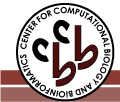 |
||||||||||||||||||||||||||||
 |
||||||||||||||||||||||||||||
Annotations for this protein have been verified by the authors of the corresponding papers |
| DP00502: B-cell antigen receptor complex-associated protein alpha chain [Isoform 1 (Long)] |  |
| General information | |
| DisProt: | DP00502 |
| Name: | B-cell antigen receptor complex-associated protein alpha chain [Isoform 1 (Long)] |
| Synonym(s): | CD79A_HUMAN Ig-alpha MB-1 membrane glycoprotein Surface IgM-associated protein Membrane-bound immunoglobulin-associated protein Antigen CD79a |
| First appeared in release: | Release 3.2 (05/26/2006) |
| UniProt: | P11912-1 |
| UniGene: | Hs.631567 |
| SwissProt: | CD79A_HUMAN |
| TrEMBL: | |
| NCBI (GI): | 547896 |
| Source organism: | Homo sapiens (Human) |
| Sequence length: | 226 |
| Percent disordered: | 27% |
| Homologues: | |
| Native sequence |
|
| Functional narrative |
The B cell antigen receptor (BCR) consists of the membrane-bound immunoglobulin molecule as the antigen-binding subunit and the Ig-alpha/Ig-beta disulfide-linked heterodimer as the signaling subunit. The BCR Ig alpha chain is involved in transmembrane signal transduction. The Ig alpha chain is a membrane, single pass type I membrane protein. This protein was characterized by the analysis of a recombinant soluble fragment of this subunit, corresponding to the cytoplasmic domain of the molecule and containing residues 166-226. Required in cooperation with CD79B for initiation of the signal transduction cascade activated by binding of antigen to the B-cell antigen receptor complex (BCR) which leads to internalization of the complex, trafficking to late endosomes and antigen presentation. Also required for BCR surface expression and for efficient differentiation of pro- and pre-B-cells. Stimulates SYK autophosphorylation and activation. Binds to BLNK, bringing BLNK into proximity with SYK and allowing SYK to phosphorylate BLNK. Also interacts with and increases activity of some Src-family tyrosine kinases. Represses BCR signaling during development of immature B cells. |
| Map of ordered and disordered regions | |
  Note: 'Mouse' over a region to see the start and stop residues. Click on a region to see detailed information. | |
| Region 1 | |
| Type: | Disordered |
| Name: | Cytoplasmic domain of the BCR Ig alpha chain |
| Location: | 166 - 226 |
| Length: | 61 |
| Region sequence: |
RKRWQNEKLGLDAGDEYEDENLYEGLNLDDCSMYEDISRGLQGTYQDVGSLNIGDVQLEK |
| Modification type: | Native |
| PDB: | |
| Structural/functional type: | Function arises from the disordered state |
| Functional classes: | Molecular recognition effectors Molecular assembly |
| Functional subclasses: | Polymerization Phosphorylation Protein-protein binding |
Detection methods:
| |
References:
| |
| Comments: | |
| References | |
|
| If you have any comments or wish to provide additional references to this protein or its disordered region(s), please click here to e-mail us. |
 |
 |
 |
 |
 |
 |
|
|
|